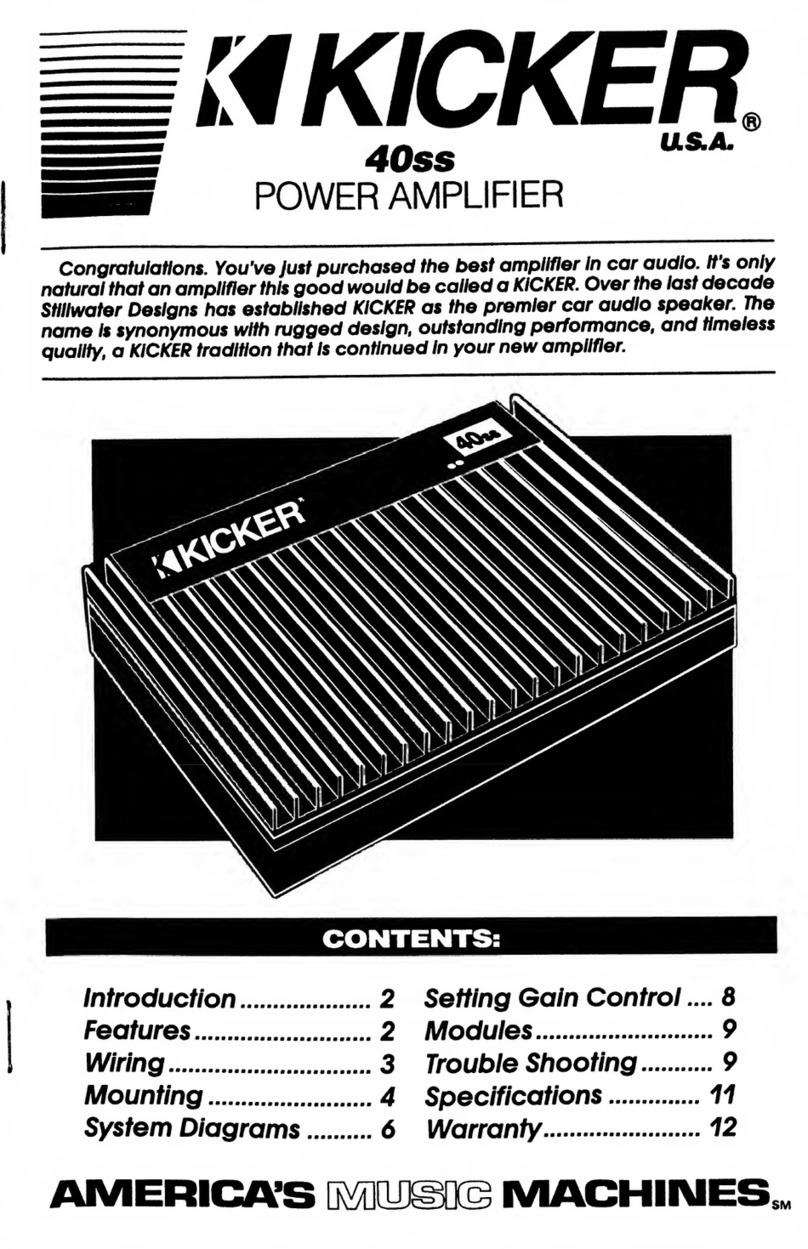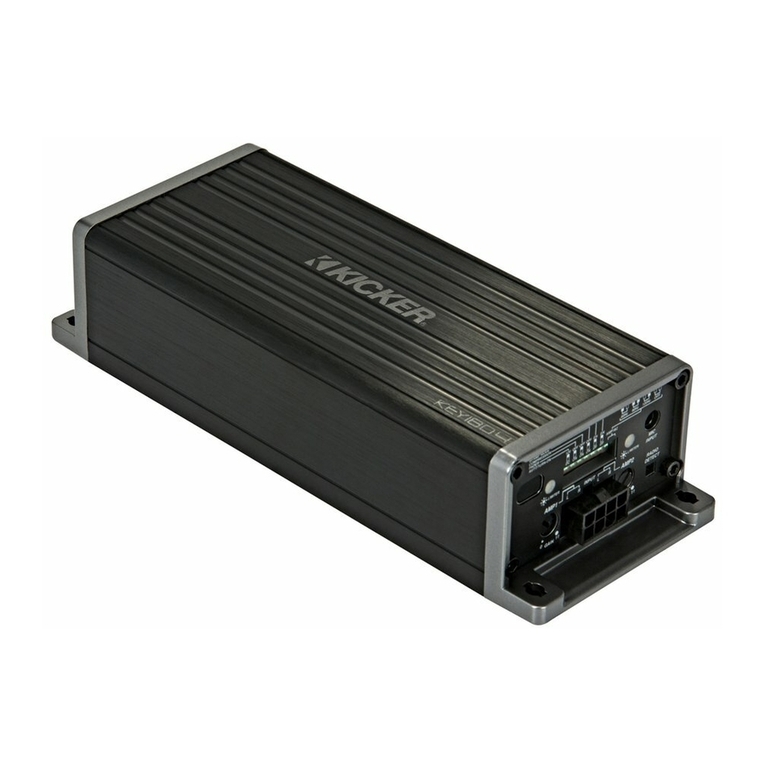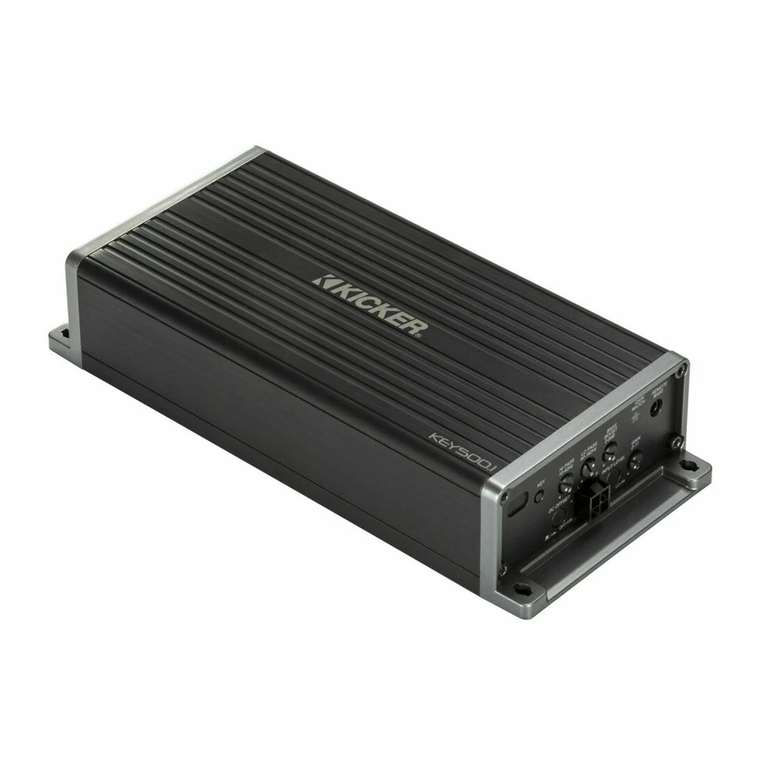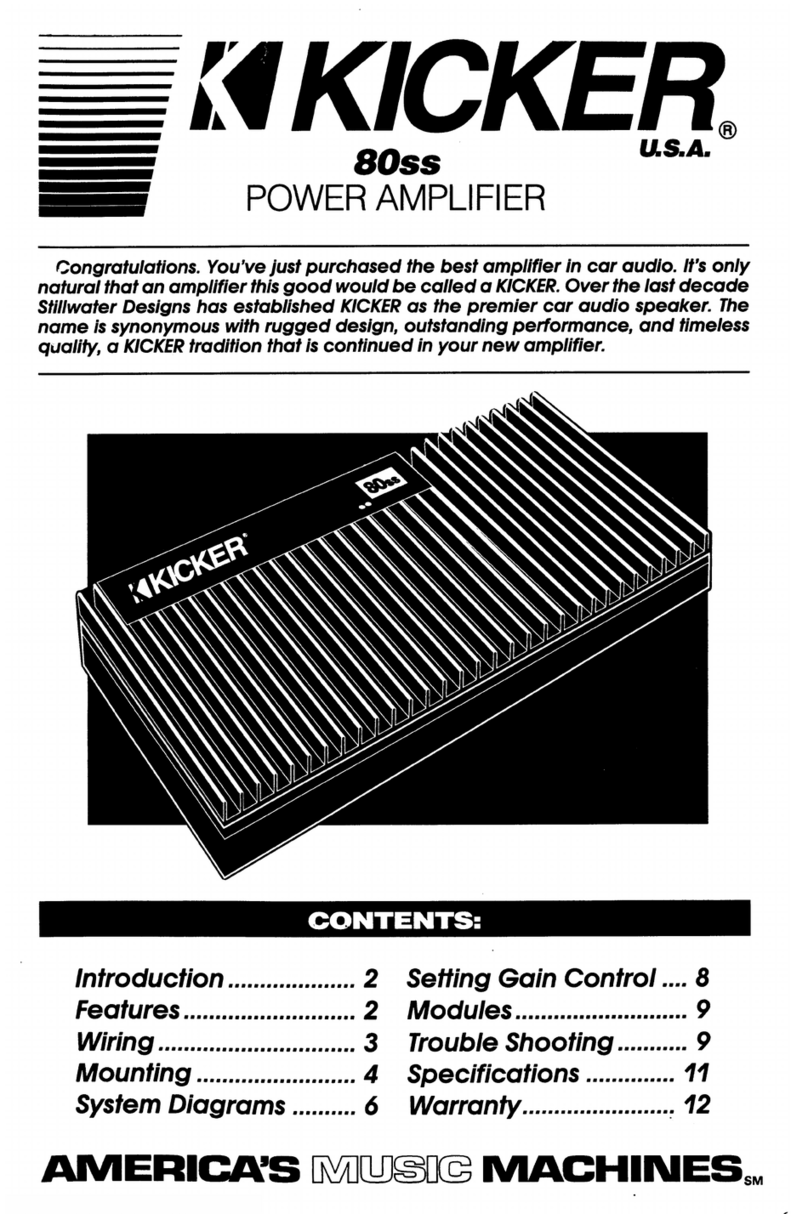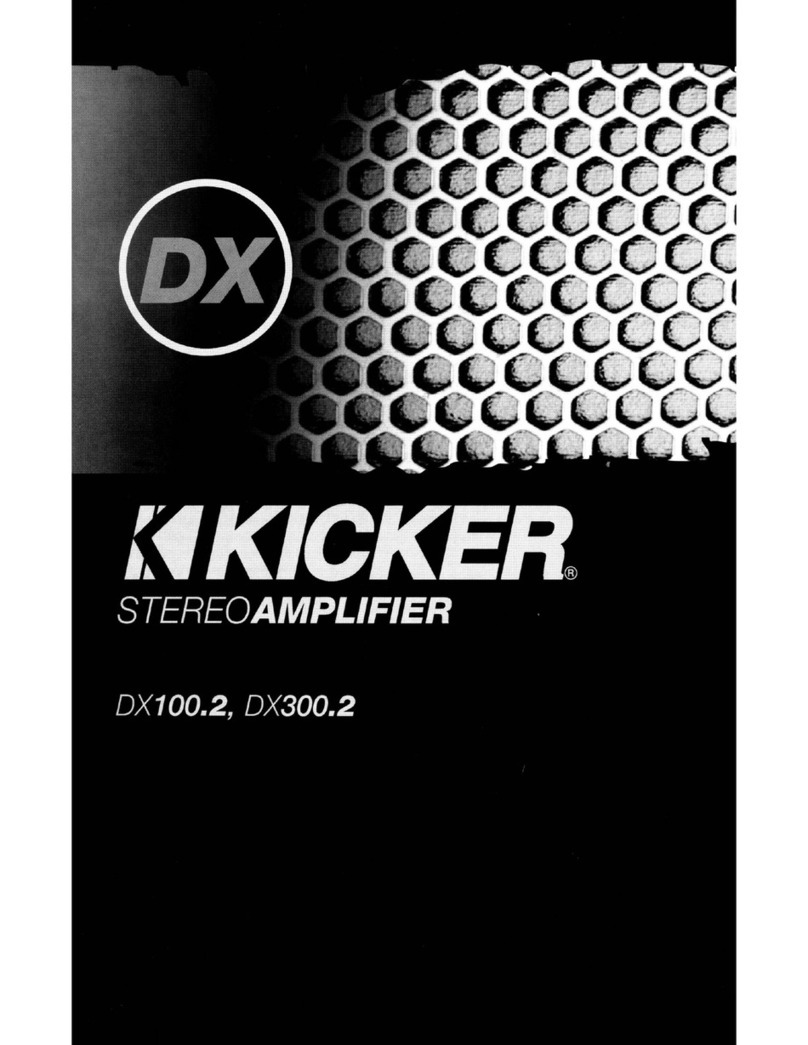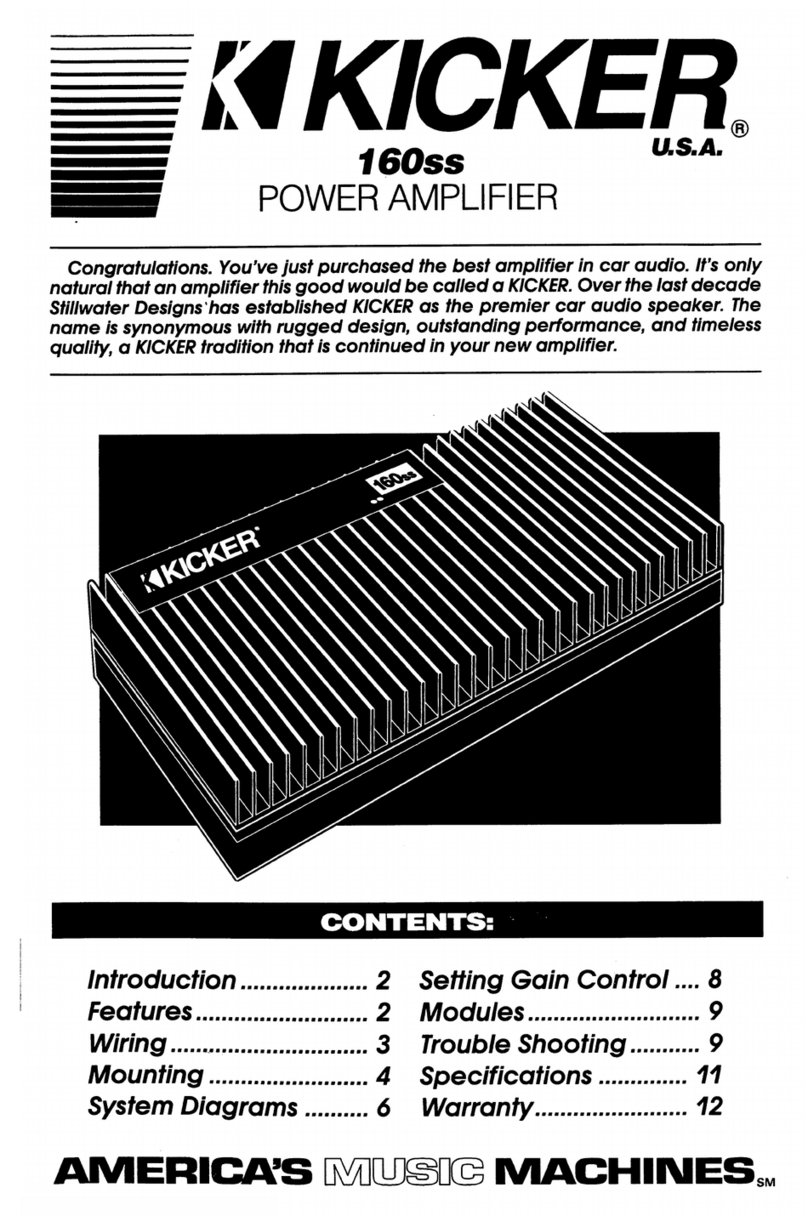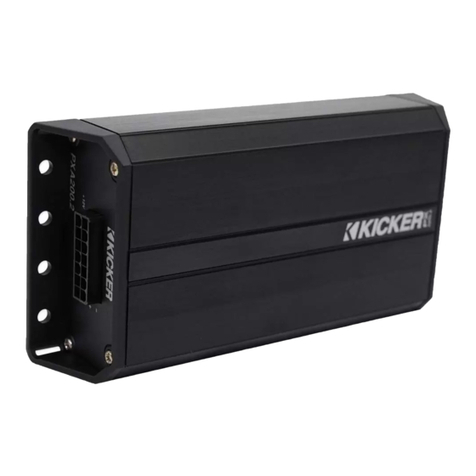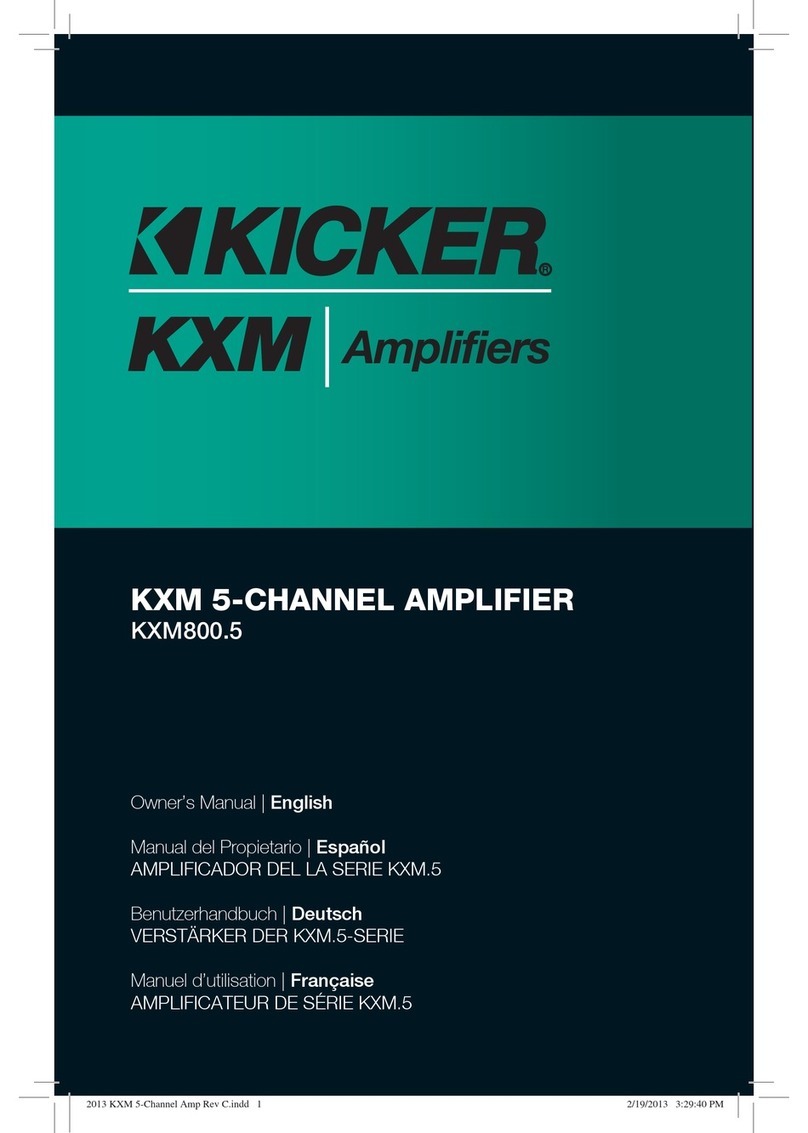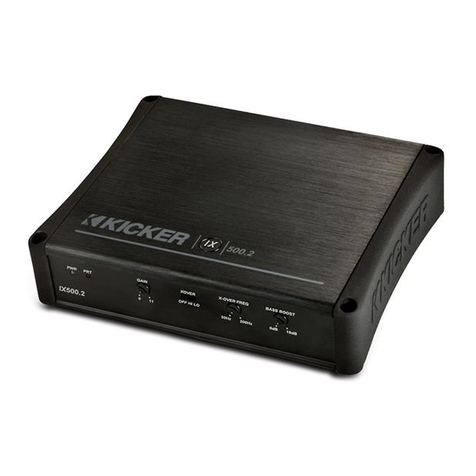6
OPERATION
Automatic Turn-On Selection: The KXM series offers three different automatic turn-on modes that can
be selected on the end panel; +12V, DC Offset, and Audio. Using either the DC Offset or Audio mode
causes the REM terminal to have +12V out for turning on additional amplifiers.
• Remote Turn-On: Set the switch to +12V to use the remote turn-on lead from your source unit. Run 18
gauge wire from the Remote Turn-On Lead on your source unit to the terminal labeled REM between the
amplifier’s positive and negative power terminals. This is the preferred automatic turn-on method.
• DC Offset Turn-On: If Remote Turn-On is not an option, the next best setting is DC Offset. The DC Offset
mode detects a 3V DC offset from the HI-Level speaker outputs when the source unit has been turned on.
• Signal Sense Turn-On: The Audio setting is the final alternative for Automatic turn-on. This is a Signal Sense
turn-on method that detects the incoming audio signal from your source unit and automatically turns on the
amp. This turn-on method will not work properly if the input gain control is not set appropriately.
Radio Detect: The RCA inputs on KICKER KXM amplifiers are capable of receiving either Hi or Low-level
signals from your source unit. If you are using Hi-Level inputs, but your source unit cannot detect an audio
system present or refuses to play audio out of one or more speakers, you may need to set Radio Detect
to ON. This will activate a load resistor at the amplifier’s inputs and tell the source unit there are speakers
present. Do NOT use Radio Detect if you are using a Low-Level input signal; doing so will greatly reduce
the input signal.
Fader Switch: Depress the fader switch if you are running two sets of inputs (front and rear for example)
to the amplifier. Leave the fader switch OFF if you want to drive all channels from a single stereo input.
Sub Input: If there is no dedicated output on your source unit for a subwoofer, use the SUB INPUT
switch to set your subwoofer input to either SUB INPUT or AMP INPUT 2.
Input Gain Control with Gain Matching: The input gain control is not a volume control. It matches the
output of the source unit to the input level of the amplifier and features Gain Matching to prevent clipping
the input. For a quick setup, turn the source unit up to about 3/4 volume (if the source unit goes to 30,
turn it to 25). KICKER recommends using the test tones at www.kicker.com/support/ to reach the most
accurate and best performing settings. Next, slowly turn (clockwise) the gain on the amplifier up until you
see the Gain LED light up or hear audible distortion, then turn it down a little. If the GAIN knob’s backlight
comes on, the input is still clipping. For full instructions on Gain Matching, please see the next page.
Crossover Switches with Frequency Multiplier: Use the XOVER switches on the end panel of the
amplifier to set the internal crossovers of AMPS 1 & 2 to OFF, HI-PASS, LO-PASS, or BAND-PASS (AMP 2
only). When the switch is set to OFF, a full bandwidth signal will be amplified. Set the switch to HP if you
want the amplifier’s internal crossover to serve as a high-pass filter. Set the switch to LP if you want the
amplifier’s internal crossover to serve as a low-pass filter. Set the switch to BP when a specific frequency
range is required. Never change the crossover switches with the audio system on!
Set the 1X/10X frequency multiplier switch to the setting that is appropriate for your application. A setting
of 10X will set the range of the AMP 1 crossover to 100–5,000Hz, and the LO-PASS crossover of AMP
2to 400–5,000Hz.
Adjustable Subsonic Filter: The variable subsonic filter will provide a cut-off point for lower frequencies
(10–80Hz) that could potentially damage your speakers from over-excursion, along with wasting your
amplifier’s power. The setting for this control should be set relative to your speaker’s low-frequency
capability. The setting for this control should be set relative to your speaker’s low-frequency capability, and
is recommended for ported enclosures.
Mini-USB for internal use only; do NOT remove or tamper. KICKER is not responsible for any damage to equipment resulting from connections made to this port.
MA GAIN
MATCH
GAIN
MATCH
GAIN
MATCH
PAIRING
2017 KXM 5ch Amps Rev H.indd 62017 KXM 5ch Amps Rev H.indd 6 4/25/2017 1:08:00 PM4/25/2017 1:08:00 PM


